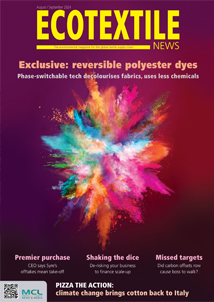WAKEFIELD – In our latest Ecotextile Talks podcast, host Philip Berman speaks with Harald Notz-Lajtkep, Hohenstein’s division manager, to learn more about a new quantitative method for assessing the presence of genetically modified organisms (GMOs) in organic cotton.
The new solution, developed over the past year, aims to tackle the issue of fraud in organic cotton supply chains head on, accurately measuring the extent of contamination in place of previous pass/fail mechanisms.
“I do believe that there’s a growing market for organic cotton testing and transparency within supply chains. I know that there is a lot of fraud inside cotton [supply chains] – where there’s light there’s also shadow,” said Notz-Lajtkep.
You can listen to the podcast here.
The test method in question is a two-step process, and first demands that a qualitative screening of a sample is conducted to determine the existence of GMO within the cotton.
This is then followed by a deeper quantitative analysis using a polymerase chain reaction (PCR) technique which identifies just how much genetically altered DNA is present.
“You must know how many seeds and cotton lines are being used and you need to know a little bit more about the seeds to go further and say what percentage of GMO is in there. If we find five from ten lines, we have 50 per cent, or if we find nine from ten lines we have 90 per cent, but it’s not always as easy as that.
Organic cotton, whilst in demand amongst fashion industry stakeholders, is produced in limited quantities at present, in part because of the risk of fraud.
What complicates matters is that throughout organic cotton processing lies the potential for natural contamination, and so – when low levels GMOs are present – it’s difficult to decipher whether this is an act of fraud or not.
Notz-Lajtkep says that between the range of three and 10 per cent the results may well be dubious.
“If it’s 10 per cent, that might be fraud, below three per cent and it could be contamination, but the discussion with the industry must go deeper and ask them what percentage do you accept and what can you do to reduce the contamination of cotton lint flowing around and causing contamination,” the division manager added.
Though the issue is by no means solved by the emergence of these new method for identifying GMO levels, Hohenstein’s work lays the foundations for addressing the issue. It will ultimately require a more expansive, collaborative approach including other industry stakeholders to mitigate fraudulent activities.












































